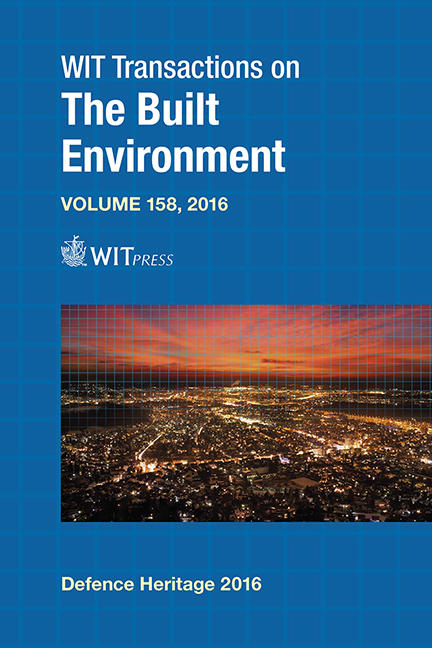Tiburzio Spannocchi’s Project For The Fortifications Of Fuenterrabía In 1580
Price
Free (open access)
Transaction
Volume
158
Pages
12
Page Range
61 - 72
Published
2016
Size
6,187 kb
Paper DOI
10.2495/DSHF160061
Copyright
WIT Press
Author(s)
R. T. Yáñez Pacios, V. Echarri Iribarren
Abstract
Fuenterrabía (Hondarribia) is a town located on the Franco-Spanish border. Between the 16th and 19th centuries it was considered to be one of the most outstanding strongholds in the Basque Country due to its strategic position. The bastion system of fortification was extremely prevalent in this stronghold. It was one of the first Spanish towns to adopt the incipient Renaissance designs of the bastion. The military engineers subsequently carried out continuous fortification projects that enabled the structure to withstand the advances being made in artillery and siege tactics. After the construction of the citadel of Pamplona had begun in 1571, following the design of the prestigious military engineer, Jacobo Palear Fratín and being revised by Viceroy Vespasiano Gonzaga, the aforementioned engineer undertook an ambitious project commissioned by Felipe II to modernise the fortifications of Fuenterrabía. Neither the plans nor the report of this project have been conserved, but in the year 2000, César Fernández Antuña published the report written by Spannocchi on the state of the fortifications of Fuenterrabía when he arrived to the Spanish peninsula, discovered in the Archivo Histórico Provincial de Zaragoza. This document conducts an in-depth analysis of Spannocchi’s project and how it was related to Fratín’s previous project. It concludes that this project encountered problems in updating the new bastions at the end of the 16th century, and identifies the factors which prevented the stronghold from being extended as was the case in Pamplona after Fratín’s project.
Keywords
fortifications, military engineers, Tiburzio Spannocchi, Jacobo Palear Fratín, Fuenterrabía, Hondarribia





